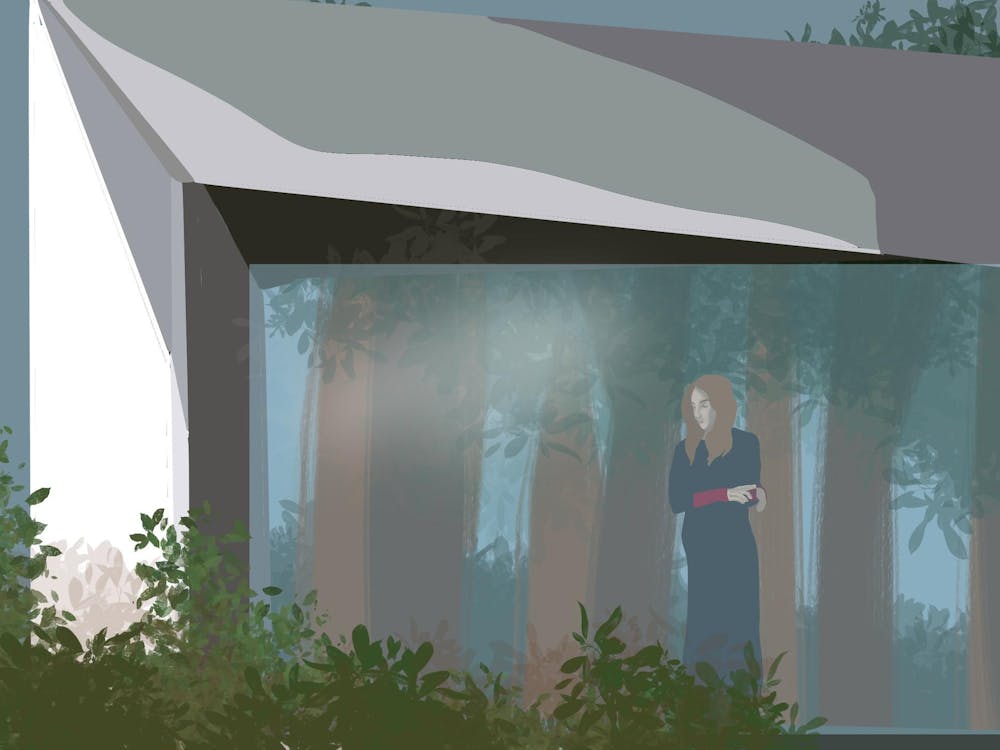Unobtrusively set at the end of the Downtown Mall, six photographs comprise an exhibit titled “Landscapes of Slavery and Segregation.” Perhaps to complement the Freedom of Speech Wall which they face, the pictures show reconstructions of the living quarters of slaves in Virginia’s history. Visitors are invited to engage with each picture by choosing a number which leads to the recording of a contemporary historian’s explanation of the picture.
The pictures, originally 360-degree spherical photographs, vividly convey the physical discomfort of slavery. While historians in the audio component of the exhibit emphasize the physical harm of slavery, some, such as James Monroe’s Highland executive director Sarah Bon-Harper, are quick to note the moral and psychological harms of slavery as well.
“We can look at these buildings and say, ‘They don’t look that different from what poor white people were living in,’ but the difference is freedom,” Bon-Harper says in her recording.
The representations of the slave dwellings are important insofar as they are physical objects forcing people to confront the reality of slavery, Joseph McGill, founder of the Slave Dwelling Project and one of the historians for the exhibit, said.
“As long as the spaces are there, it’s hard to deny the presence of the people who lived in them,” McGill said.
The impulse to ignore or disregard Virginia’s heritage of slavery is a common theme in the exhibit confronted by multiple historians. Bon-Harper said that Highland received public criticism about memorializing this particular aspect of the Founding Fathers.
“In looking at it from 30 years later, we see that it’s an important thing to remember and not forget,” Bon-Harper said.
McGill, who coordinates overnight stays in slave dwellings, noted one anecdote in which two descendants of slaves were motivated to take an active part in telling the history of Bacon’s Castle, one of the quarters featured in the exhibit, by one such overnight stay.
Matthew Gibson, the curator of the exhibit and director of Encyclopedia Virginia for the Virginia Foundation of the Humanities, was doubtless encouraged by such stories. Gibson explained that his intention for the exhibit is to “tease out those narratives that we may not be familiar with.”
Gibson noted that history itself can have biases, making narratives essential.
“You know history, by its nature, can be a privileged exercise, so we need narratives of our histories,” Gibson said.
By presenting such accessible physical landscapes of slavery, the exhibit exposes viewers to these narratives of those without privilege. Gibson encourages his audience to actively question how history is presented.
“[It is important that] we think about the questions of memorials and memorialism … and how we can add to those stories with people who have been marginalized [and] who helped to create those stories,” Gibson said.
Further, Gibson said, such memorials have immediate implications in today’s world.
“I think that there certainly is a correlation between what we’re seeing now, in the lives of African-Americans on a daily basis, and how there’s been an attempt to neglect those stories,” he said. “I think to put those stories back in the landscape and preserve them forces us to think about how those issues have impact on the history we’re creating today.”
Of course, to many passersby, the audio recordings will go unheard and the pictures will only attract attention for a second. But the exhibit serves a more profound function — to incorporate vestiges of slavery into Charlottesville’s landscape to remind the community of its history.
David Schutte contributed reporting to this article.





